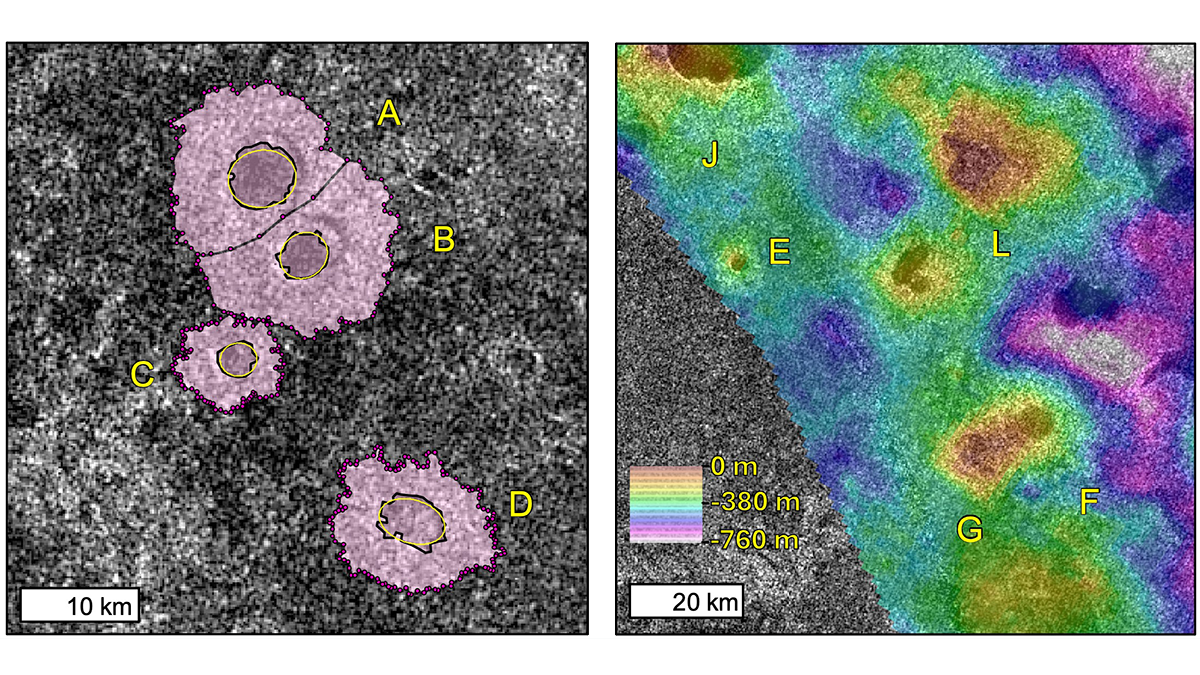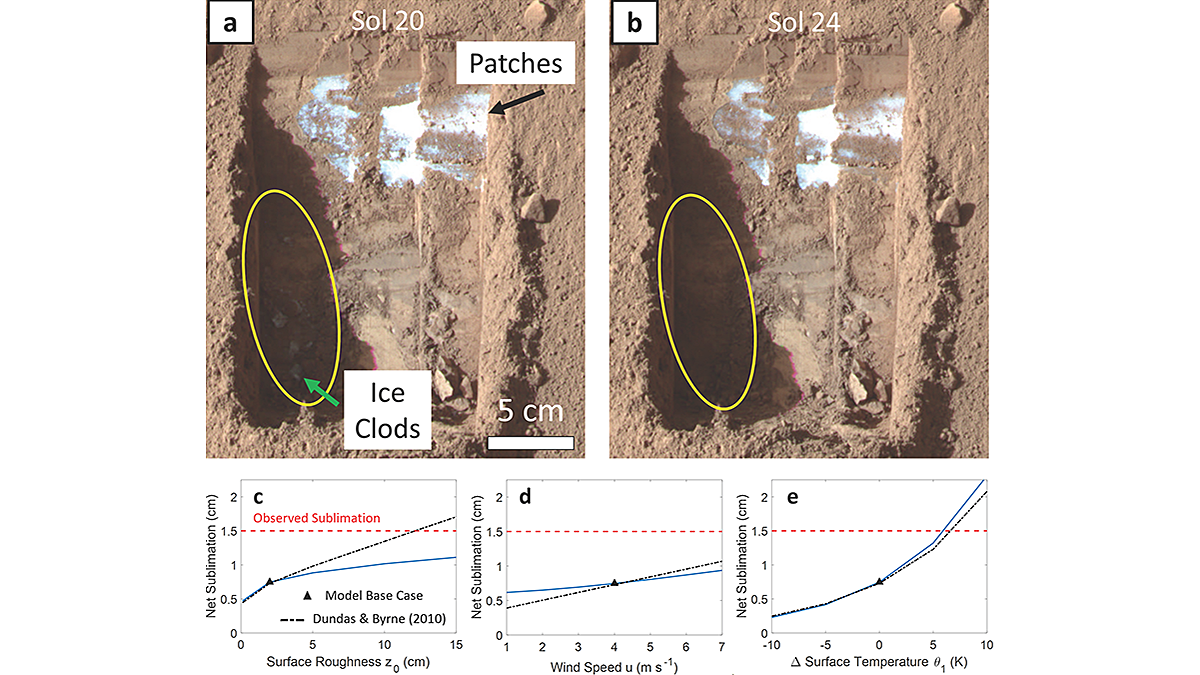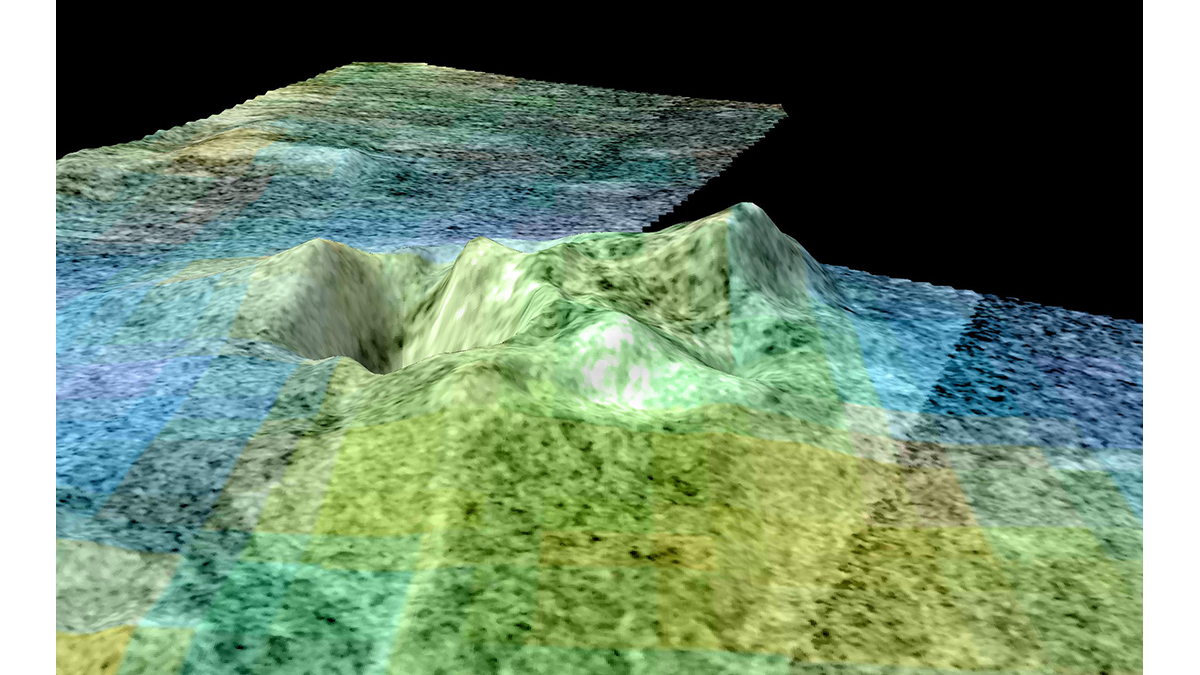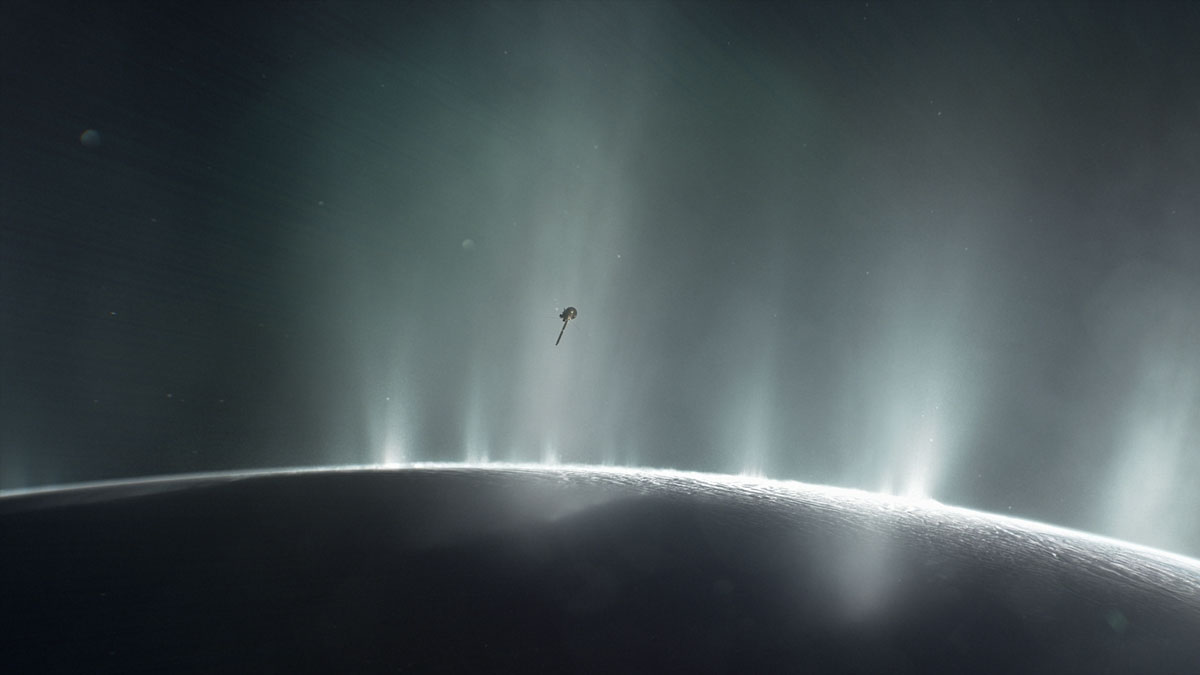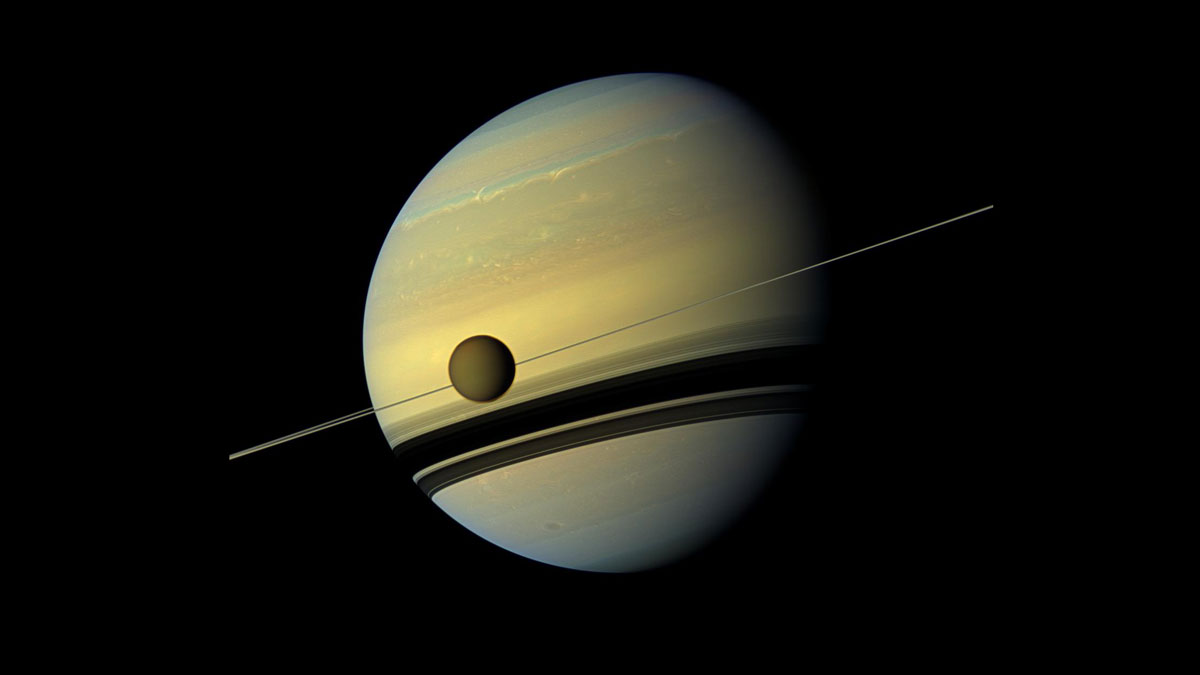A new eight-rotor robotic probe will head to the solar system’s most Earth-like moon. Here’s what its team is doing to prepare.
Titan
The Explosive Origins of Titan’s Rampart Craters
In a new study, volcanic explosions are explored and modeled to understand the possible origins of rampart craters on Titan and determine whether their formation can source atmospheric methane.
Waves May Be Crashing on Titan’s Shores
A new study suggests that wind-driven waves could be sculpting the coastlines of the lakes and seas on Saturn’s largest moon.
Towards a Unified Framework for Earth, Mars, Titan, and Exoplanets
From a simple set of in situ or synthetic data, a general unified model has been developed to calculate turbulent fluxes and evaporation rates on any rocky body with an atmosphere.
La canción de hielo y fuego del criovulcanismo
Las lunas oceánicas del sistema solar exterior nos dan pistas sobre volcanes de hielo, fuentes hidrotermales, y la tentadora posibilidad de habitabilidad.
Cryovolcanism’s Song of Ice and Fire
Ocean moons of the outer solar system hint at ice volcanoes, hydrothermal vents, and the tantalizing chance of habitability.
The Nitty-Gritty Forces That Shape Planetary Surfaces
Scientists are coming up with ingenious ways to compare terrestrial sand dunes, dust storms, and rain with their counterparts on Mars and Titan.
Titanic Caves and Where to Find Them
More than 21,000 pits, depressions, and closed valleys on Titan may provide access to underground voids or caves.
Marine Science Goes to Space
Space and ocean scientists take a splash course in multidisciplinary science to chart our solar system’s ocean worlds.
Long-Gone Moon Could Explain Birth of Saturn’s Rings
Named Chrysalis, the moon could have disintegrated during a close encounter with the gas giant roughly 100 million years ago.


